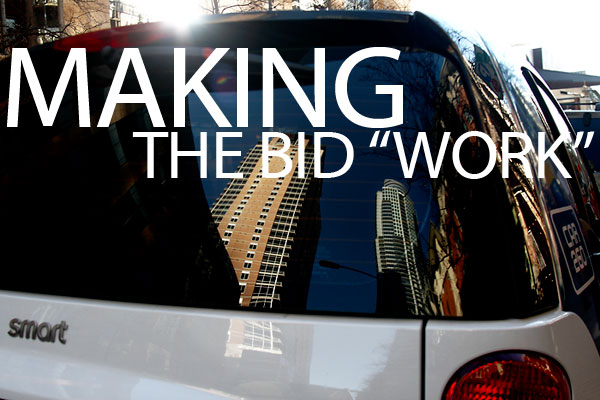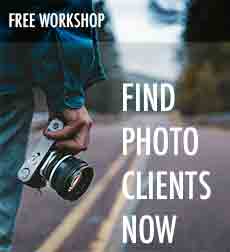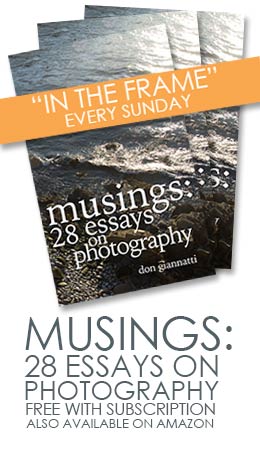The phone rings a little before lunch. You answer it and a voice on the other end says, “How are you. You showed your book here at the agency a few weeks ago, and we have a job we would like you to bid on. We will email over the particulars if you are interested.” The first thing you think is “Damn – I am just the hottest thing since sliced bread, the bomb, the…” – it hits you. You are going to have to price a gig. Put some numbers down. Make a commitment to a price. Submit a bid.
Nothing causes more heartburn for emerging photographers than pricing. What do we charge? Will I be too high and not get the job? What if I am too low and they either think I am incapable? What if I am so far under that I lose money – or worse?
And what happens if after you submit the bid, you get a call from the agency point person who asks for some clarification on your bid, and shares with you that they would love to hire you – but you are a couple of thousand over the budget, and a bit higher than the other 368 photographers that bid it.
OK – it probably wasn’t 368 – it just feels that way.
Now the heartburn of submitting a bill becomes the ‘catastrophic nightmare’ that is known to the emerging photographer as “negotiating” with the client. And you want this job… you really want this job.
They have accepted the bid you sent, but want to see if they can get the price down lower. If you have not prepared a bid correctly, this can be a terrible event for you. If you have a fear of negotiation, it will even be more horrendous.
Here are some tips for making the negotiations more palatable and also ways that you can provide a win/win for your client. Remember, they are not adversaries, they are people who want to work with you.
Prepare a Bid That Leaves “Room for Negotiation”.
One of the easiest ways to be able to negotiate is to have things that are negotiable. If your bid is a single fee price, you may have a problem figuring out what to cut. And how to re-arrange things that you will have to be responsible for if the shoot is a go is a terribly difficult thing to do in your head – with the client on the phone.
Working in your head makes no sense. Write things down. Use a bidding software, or create a spreadsheet to keep it all in order.
“Line Item” expenses are a good way to let your client see what is involved and what it will take to make the photographs they need. Airfare, food, assistants, prop rentals, car rentals, hotels, stylists, MUA’s, models and more. Sometimes much more, are needed to do the job to your clients needs.
Creating the line items means two things: Charge what it is worth, and add some markup when possible. Some ad agencies require backup documentation, so be aware of what you can and cannot do and adjust accordingly.
Then add each line item with the amount that you need. Be very meticulous when preparing these estimates and make sure you do not low-ball the pricing of these line by line items. They can be definite places for negotiation. Price them at what you research as a fair price, but not the cheapest you can find. If you are already at the bare-bones number, you have no wiggle room.
And in the art of negotiation, wiggle room is a good thing to have.
So let’s say we have a bid going out for a two day brochure job on location. We will need to have an assistant for the heavy lifting and digital assistance.
I could say “$12,000 for the shoot”.
The client calls and says, “We are pretty good, but we can only get the client to spring for $10K. What can you do?”
Without the itemized list of what it will take to do the shot, it becomes a crazy mix of numbers in your head. And that can mess you up terribly. Without the line items to refer to, you are changing things and missing opportunities. What do you chop without sounding like you had no idea what you were doing when you tossed that number out?
It becomes more heartburn.
Hit the jump for a strategy for bidding.
The Line Item Approach
However, with the line item approach, we can negotiate ways to do what needs to be done.
Shoot Fee: | $5000
Usage Fee: | $2500 (Client wants buy out on two images)
Assistant: | $600 per two days
Equipment Rental: | $500 (lights, stands, additional boom, backup pack)
Travel (8 hrs total) | $950
Gas/Vehicle | $350
Food | $300 ($75 per diem per person)
Hotel | $650
Scouting | $500
Digital Storage | $300
Miscellaneous | $200
First – the top line is off the table as much as possible. If you charge that much, then that is what you charge. If you start to negotiate that fee, then you will lose every time. (Note, I am not saying you shouldn’t do what you have to do, but for me – if that is what I said I needed for me, changing it only says I wasn’t sure what I actually was doing, and my first figure was pulled out of thin air.)
What if we are able to convince the client that they don’t need a buyout, only usage for the two images for the brochure run. That could save $1500 there. Can we find cheaper accommodations with the client’s help or through Priceline? We could save a bit there. The client has already picked the location, so instead of a scout, we only need to swing by and check it out… $100.
And we have arrived to the clients price of $10K without too much pain and angst.
I may opt for Mickey-D’s and Subway for $40 a day if it gets me the gig. I can find cheaper accommodations, and maybe I waive the travel if they can provide it in-house. But I don’t change the number at the top. That is my fee. THAT is what I need to be paid for ding the work as described. Carved. In Stone.
(Or at least a very hard, igneous material that would be difficult, but not impossible, to alter. I’m just sayin’…)
Compromise and finding ways to work together are an important part of your photography business. Do not pass on the opportunity to roll up the sleeves and get into the hard work of finding out how you can make it work. Your client will appreciate it – and you will have more opportunities to shoot for them.
Finding out what to charge is another article, but for now here are some resources for you:
ASMP (American Society of Media Photographers)
APA (Advertising Photographers of America)
FotoQuote (Software)
BlinkBid (Software)
Also note that Photoshelter has lots of resources on bidding and negotiating for the commercial photographer.
Your work has value. And the value is important to you both as an artist and a businessperson. Taking less than the value of your work will make you feel less positive about your work and yourself.
Prepare for No Deal
Negotiating must always include this important component – the ability to simply walk away from the deal.
With no regrets, no looking back.
If the deal stinks, it will stink when you are done. But then you will spend time regretting it, smoothing over possible irritations and with less money for your efforts than you should have. Listen to your gut… if it sounds too good to be true, it is – and if it sounds pretty fishy, it probably is as well.
And prepare for more because the client has learned they can beat you up and win. If they win once, they will assume ‘no contest’ for the next match. And now you are in the position of having to become an aggressor in order to win back what should have been. There are some clients who are worth it… but I find with the competition so great out there, they simply move on. They may feel they have won before and you winning would make them a loser.
No winners and losers at this stuff. It is a terrible mindset to be in.
It is not about winning – it is about business. Smart business practices always make sense. And even so, winners like hiring winners – you can’t imagine how hard it is to change your reputation in a smaller market. From cheap and easy to elegant and expensive? Yeah… believe me when I tell you that is a most difficult thing to do. (I may do a post on how to craft a strategy, but it is very hard to change people’s opinions of you in this business.)
Twitter / Facebook / Workshops / About.Me / My Book, Lighting Essentials on Amazon
And if you like the articles here, LIKE them on FB or click the little G+ thingy. I appreciate your kindness.






Great post. Just went through exactly this exercise last week – and walked away…. Checked in on the client today and was told ‘they had found another photographer who was more in their price range’. Well, I did my homework, and lets just say that price range was well below market rate.
A very good post and excellent detail. I know the above comment is the way a lot of the industry is headed unfortunately, we see it every day. So what type of strategy do you recommend for those looking to make a full time living from their work and therefore are not able to undercut the newbies with their pro-sumer dslr’s?
I think the best thing to do is focus on the clients who do value what you do. Ignore the ones that don’t matter anyway.
If a client cannot see the value in a professional’s work, their delivery, their consistent excellence, and their ability to solve the problems, then they are not a client I want to work with anyway. Why ask for more problems with a client who doesn’t value what you do?
And if there are clients in your life that are moving toward the cheaper, non-pro’s, find a way to educate them on your value. Never get into a bidding war, and always look for clients who appreciate your work. I think it is the one thing we photographers make a mistake in thinking: that we should get every gig with every client.
Nope. Some of those clients are just not worth it. Focus on the ones that are.
I wasn’t clear, do you create the line-items for your own personal reference, or do you always share that with the client so they have a clear understanding how you arrived at the final figure from the beginning?
Hi Eric.
I absolutely share those costs, line by line, with the client.
It is important for them to know, and they are not going to sign off on something if they do not know where the money is going.
And with this line item approach, they see what it costs to make the shot, as well as giving the photographer a wiggle room point for negotiation. And, most importantly, a negotiation point that does NOT include their fee. The fee is sacrosanct, as it refers to the value of the image. Expenses may or may not be negotiable depending on how much value they have to the making of the best photograph. (For instance, if the best angle of that building is from 30ft in the air, you are going to need a cherry picker to make that best shot. If the cherry picker is off the table due to expense, then the ‘best’ shot is off the table – but not because you are incapable, but because the budget is not there for it.)
Hope that helps.